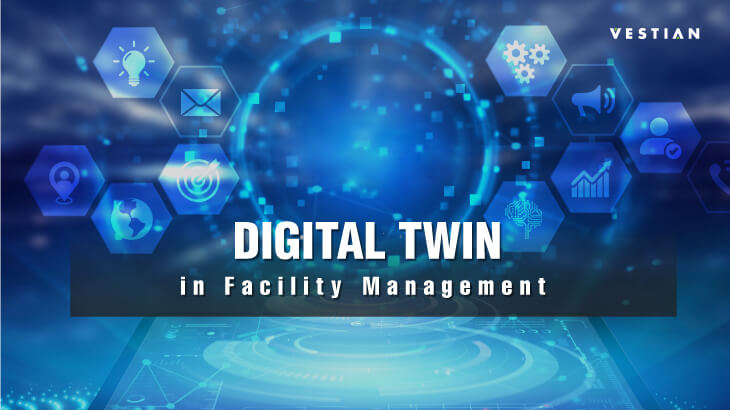As complex and multifaceted as Digital Twin technology may seem, it is already proving to be a game-changer in the world of Facility Management or FM services. Before we dive deeper into the role and importance of this technology, let us first understand the meaning of a Digital Twin. As the name suggests a Digital Twin is essentially a digital replica of the physical entity, in this case of a building or facility. It is equipped with sensors, drones, and other wireless technology to collect various layers of data, thereby enabling the concerned parties to acquire useful insights about the project via machine learning algorithms.
As a matter of fact, the data collected using a digital twin often helps establish a connection between the physical and digital entities that reflects every stage of a project – right from design to construction, and from installation to operation.
Unlike a few years ago, the roles of Facilities Managers have become far more complex with the need to monitor cost-effectiveness, ensure greater efficiency, and even manage certain HR and IT functions. It wouldn’t be wrong to say that the present-day FMs need to give due diligence to the individualisation and customisation of the workplace to cater to the specific needs of every user. All of these added responsibilities warrant that the FM team consistently has access to information pertaining to the functioning of the building to keep construction and operational costs at a minimum.
This is where having a digital twin proves to be of immense benefit to the FM. The twin acts as a test model, which helps obtain the necessary data regarding the operational performance and sustainability of the building, beforehand. Everything from the cost of operations to that of waste management, from technical requirements for air quality monitoring and maintenance of hygiene to the management of human traffic, especially in the post-pandemic times can be forecasted and planned well in advance, with the help of a digital twin.
Earlier, FMs were required to manually collect and collate data every time a cost-benefit analysis was needed in a bid to execute change. Naturally, this took an immense amount of work, and even then, there was no way to be sure that their analysis was accurate. There have been multiple instances where the assessments were so imprecise that the resultant change led to losses instead of the expected benefits. Use of this technology eliminates any such discrepancies by offering precise, real-time data.
Furthermore, digital twins are equipped to offer far beyond a primitive 2D representation of the facility. In fact, they often provide a complete insight into maintenance plans, warranty, and service agreement information as well as technical attributes of architectural objects, thereby enabling far more efficient cost and time management.
Digital twins also serve as catalysts for augmented and virtual reality that further paves the path for predictive maintenance, service requests, as well as repair and replacement requirements, all of which combined offer improvement in management of resources.
In the post-COVID era, digital twins will enable remote management of facilities, thereby substantially reducing the risk borne by FMs and their subordinates. Hence, it shouldn’t come as a surprise that the focus of the industry increasingly shifts to digital twin equipped FM services. After all, technology has always been one of the most promising aspects whenever circumstances warrant a radical shift in the way we function.
